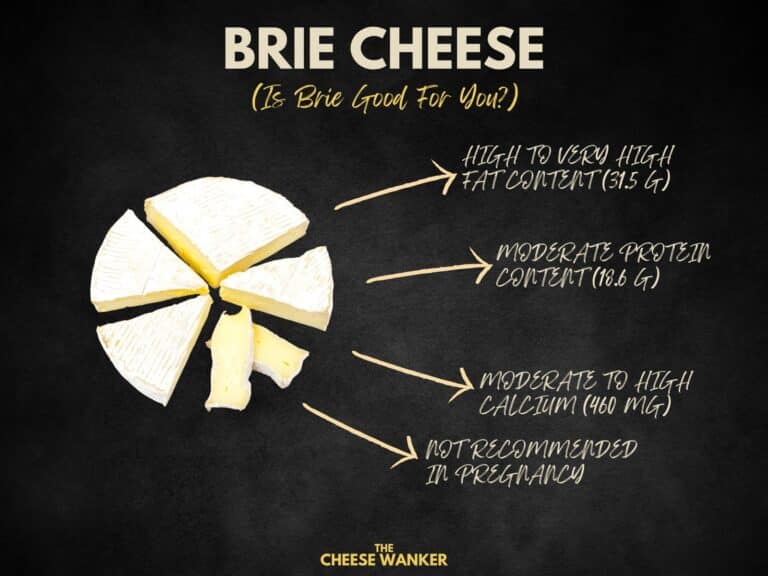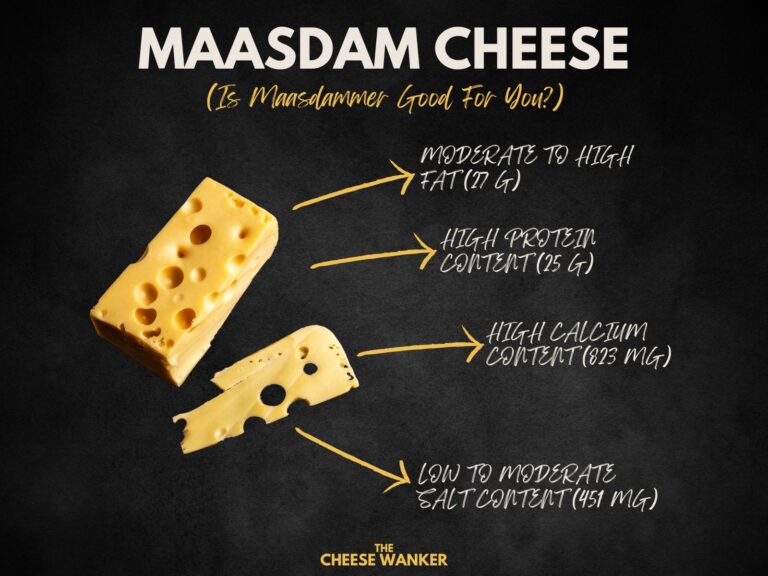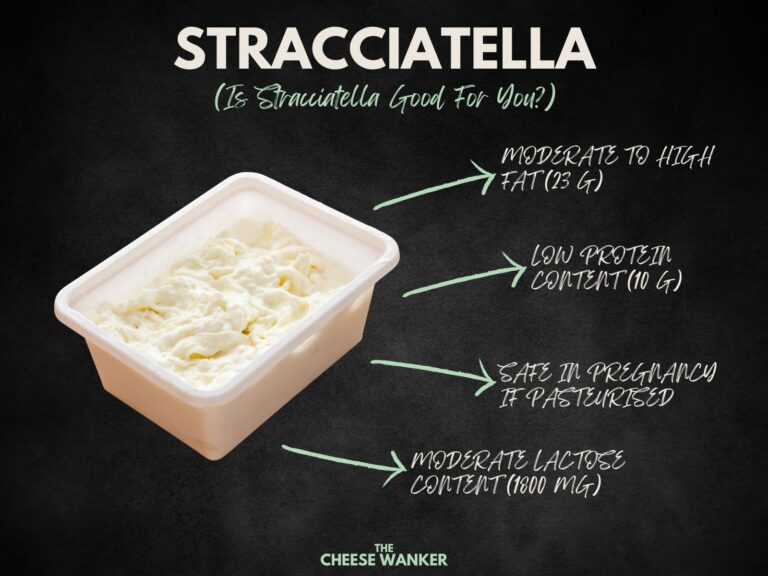String cheese, a popular and versatile dairy product, has earned its place in lunchboxes and snack trays worldwide. This blog post delves into the nutrition facts of String Cheese, unravelling the scientific intricacies that make it a unique and nutritious choice for consumers.
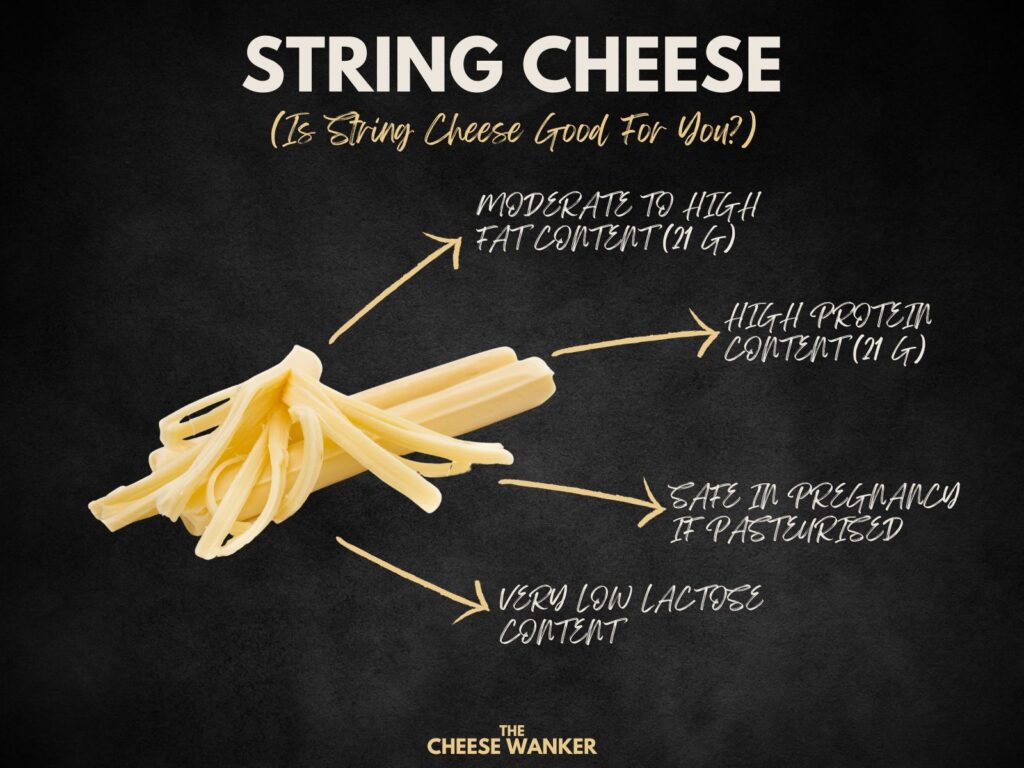
SEE ALSO: Nutrition facts for popular world cheeses in The Cheese Wanker’s index →
What is String Cheese?
Originating from Italy, String Cheese is a type of cheese made from cow’s milk. Its distinctive name comes from its string-like texture, achieved through a unique stretching and kneading process during production.
Organoleptic properties, such as its mild flavour and firm yet pliable texture, make it a delightful snack. When it comes to serving, String Cheese shines as a convenient and portable option, providing a tasty source of nutrition on the go.
Nutrition fact sheet
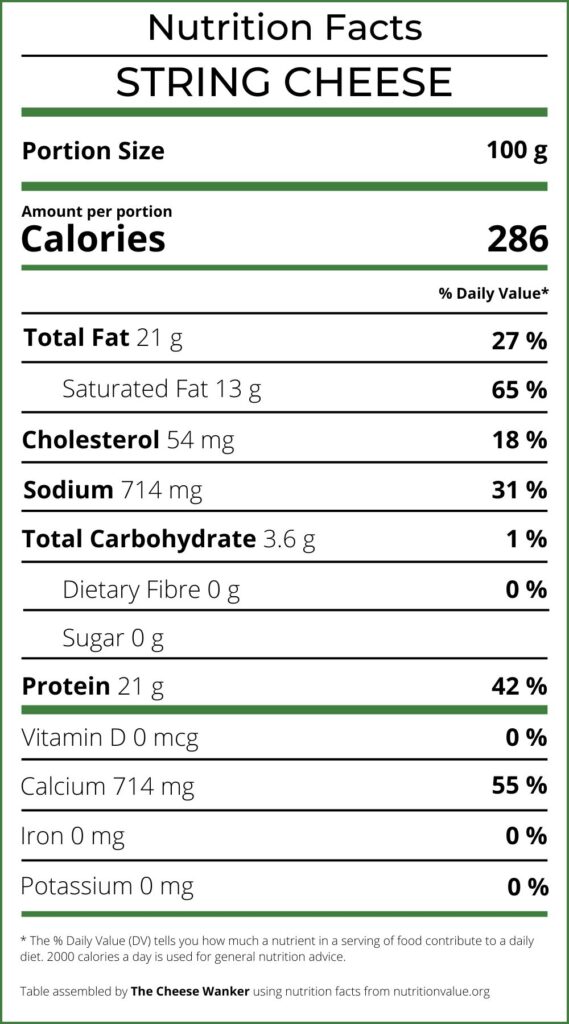
Nutritional review for String Cheese
Eating healthy plays a pivotal role in maintaining overall well-being and preventing chronic diseases. A balanced and nutritious diet provides our bodies with essential vitamins, minerals, and macronutrients, fuelling optimal physical and cognitive function.
With this in mind, let’s have a look at some of the key nutrition facts for String Cheese.
Calorie Count
Starting with the calorie count, a 100 g portion of String Cheese will contribute 286 calories to your daily intake. The significance lies not only in the calorie intake but also in the nutritional value derived from these calories.
Indeed, the caloric content of this pasta filata cheese is made up of different types of fats and proteins and only a small amount of carbohydrates. We’ll get back to that a bit later.
Fat Content
With a fat content of 21 grams, String Cheese positions itself as a source of both saturated and unsaturated fats. These fats are not merely contributors to the cheese’s creamy texture but also play essential roles in supporting bodily functions.
Saturated fats, often maligned, are present in moderation, while unsaturated fats contribute to heart health. Together, they create a harmonious blend that aligns with a balanced diet.
You can learn more about the different types of fat in cheese and which cheeses have the lowest fat content here.
Protein Content
Next, String Cheese’s protein content, standing at 21 grams, is noteworthy. The proteins are predominantly derived from casein and whey, the two primary proteins in milk.
These proteins are invaluable for repairing tissues, fortifying the immune system, and promoting muscle development.
The moderate to high protein content makes this cheese not just a tasty snack but a nutritionally dense one, especially suitable for those with active lifestyles or fitness enthusiasts.
Want to find out which cheeses have the highest protein content? Click here for our blog post covering cheeses with the highest protein content.
Cholesterol Content
The cholesterol content, registering at 54 milligrams, beckons a nuanced discussion. Conventional wisdom often associates dietary cholesterol with adverse health effects, but emerging scientific perspectives challenge this notion.
String Cheese, within its modest cholesterol content, raises questions about the need for a re-evaluation of the once rigid guidelines surrounding cholesterol intake. Understanding the complexity of cholesterol metabolism is essential for a comprehensive grasp of its impact on health.
You can learn more about the impact of dietary cholesterol on blood cholesterol levels in our dedicated post here.
Salt Content
The savoury allure of String Cheese owes much to its salt content, measured at 714 milligrams. Salt, while crucial for maintaining electrolyte balance and supporting nerve function, requires careful consideration.
Excessive salt intake is linked to hypertension, making it imperative to strike a balance between the cheese’s culinary appeal and health-conscious choices. Unpacking the reasons behind the saltiness of String Cheese adds depth to the understanding of its overall nutritional composition.
You can read more about why salt is important in cheesemaking in our comprehensive post here.
Calcium Content
With an impressive calcium content of 714 milligrams, String Cheese emerges as a significant contributor to bone health. Calcium is not only a structural component of bones but also plays a pivotal role in blood clotting and muscle function.
For individuals who may find it challenging to meet their calcium requirements, String Cheese becomes a valuable ally in fortifying bone density and overall health.
You can read more about this important mineral and find out which types of cheeses have the highest calcium content in our post here.
Safety in Pregnancy
For expectant mothers, String Cheese made with pasteurised milk is considered safe during pregnancy. The pasteurisation process ensures harmful bacteria are eliminated, providing a wholesome and secure option for pregnant women.
Of course, if you’re unsure of what you can eat during pregnancy, you should consult your healthcare professional to get a personalised plan. You can read more about which cheeses you can eat when you’re pregnant by clicking here.
Lactose Intolerance
Finally, String Cheese has a very low lactose content. Hence, it is generally well-tolerated by individuals with lactose intolerance.
The degree of tolerance may vary among individuals, and understanding personal limits is key to enjoying this dairy delight without discomfort.
Conclusion
In conclusion, the nutrition facts of String Cheese illuminate its status as a balanced and nutritious snack. From its calorie content to the spectrum of fats and proteins it offers, String Cheese stands out as a wholesome option.
Understanding its nutritional profile empowers consumers to make informed choices, incorporating this delicious dairy treat into a healthy and well-rounded diet.
References
Overall nutritional content
The nutritional content of cheese in our table comes from the USDA Food Data Central Repository, the Australian Food Composition Database and cheese manufacturers. We realise that there can be variations between different brands and producers. Hence, the numbers we have used are averages.
Fat content
Our fat RDI data comes from Cleveland Clinic’s Healthy Fat Intake resource.
Type of fat in cheese as per Harvard T.H. Chan’s The Nutrition Source.
Protein content
Our protein RDI data comes from Harvard Medical School’s Harvard Health Publishing.
Cholesterol content
Is There a Correlation between Dietary and Blood Cholesterol? Evidence from Epidemiological Data and Clinical Interventions? – Maria Luz Fernandez and Ana Gabriela Murillo
Saturated fat, carbohydrate, and cardiovascular disease – Patty W Siri-Tarino, Qi Sun, Frank B Hu and Ronald M Krauss
Effect of cheese consumption on blood lipids: a systematic review and meta-analysis of randomized controlled trials – Janette de Goede, Johanna M Geleijnse, Eric L Ding, Sabita S Soedamah-Muthu
Safety in pregnancy
All the advice relating to what cheeses you can eat during pregnancy in this article is based on the recommendations by health authorities in Australia, the UK and the USA. If you are unsure about what you can or cannot eat, please consult your doctor.
Australia – FSANZ, United Kingdom – NHS and United Sates of America – FDA
Lactose content
Lactose residual content in PDO cheeses
Detection of lactose in products with low lactose content
The analysis of lactose in milk and cheese products by HPLC
Food Standards ANZ Food Composition Database
Lactose & Galactose content of cheese
